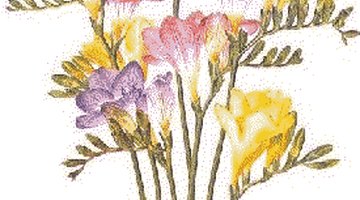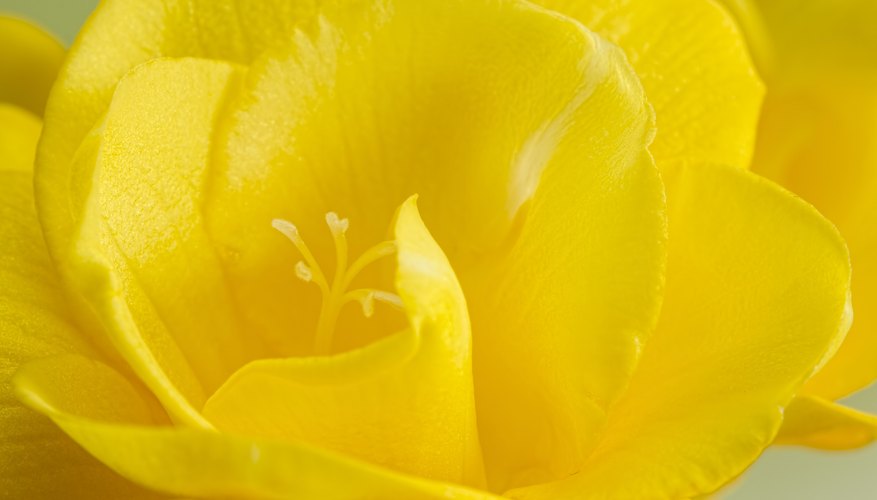Freesia (Iridaceae) is a flowering bulb grown from a small corm. Freesias multiply quickly, and you will want to divide them every three or four years. They grow to about 45 cm (18 inches) high, and bear fragrant flowers along a long, narrow stem that droops toward the ground. Because of their strong fragrance and wide variety of colours, they are popular with florists, and are often found in bouquets.
Planting freesia bulbs
Freesias propagate by two methods, seed or bulb. They do produce seed, and horticulturalists often use this method. Freesia bulbs, or corms, are the most readily-available commercial means of growing them. Plant the corms in well-drained soil, about 2.5 to 5 cm (1 to 2 inches) above the top of the corm, when the soil has been about 18.3 degrees C (65 degrees F) for ten days or so. They look best in clumps, so space the corms about one inch apart. Water the corms until the soil is moist, but not soggy. Freesias don't like to dry out, so keep them watered while they're growing. You should begin seeing shoots emerge after two weeks, with flowers a few weeks later.
- Freesias propagate by two methods, seed or bulb.
- Freesia bulbs, or corms, are the most readily-available commercial means of growing them.
Hardiness
Freesias can winter over in areas of the UK where winter temperatures do not drop below -6.67 degrees C (20 degrees F).
Growth and habits

Freesias are native to the mountain areas of Africa, where days are temperate and nights are cool, about 7.22 degrees C (45 degrees F). The corms are easy to pot and force at any season indoors. To grow them throughout the winter months, put about six corms in a six-inch pot filled with a potting soil mixture of loam, sand and compost, cover them with about an inch of soil, and water well. Keep the soil moist while the plant is developing, but not soggy; bulbs and corms rot with too much moisture. Freesias like sunny, bright windows, and will reward you with lovely green shoots in about two weeks, with flowers following about three weeks later.
- Freesias are native to the mountain areas of Africa, where days are temperate and nights are cool, about 7.22 degrees C (45 degrees F).
- The corms are easy to pot and force at any season indoors.
Uses for freesias
Freesia flowers look lovely in a floral bouquet, and their funnel-shaped blooms on the long, slender stems are often part of floral shop arrangements. The blooms last about a week once they are cut. Another important commercial use for freesias is in perfumes, bath oils, and aromatherapy fragrances.
Titbits
Freesia is the genus of the family Iridaceae. Freesias were named after Friedrich Heinrich Theodor Freese (1795-1876), a physician and botanist from Kiel, in northern Germany. Freesias are associated with innocence and sweetness, probably because of their delicate structure and fragrance.
